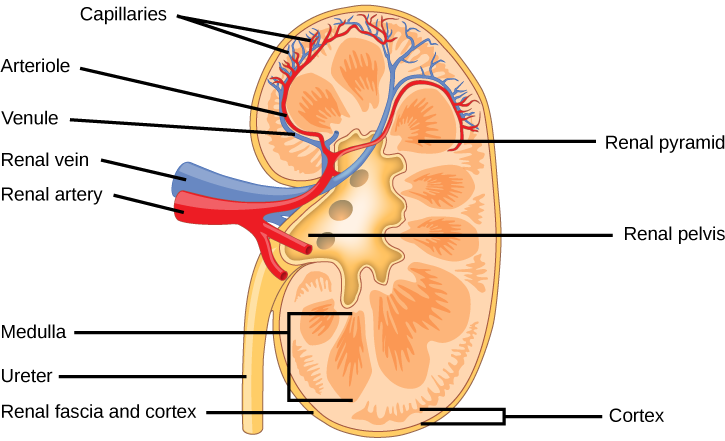Thermoregulation and Body Fluids
1/9
Earn XP
Description and Tags
exam 4
Name | Mastery | Learn | Test | Matching | Spaced |
|---|
No study sessions yet.
10 Terms
thermoregulation in ectotherms and endotherms
Ectotherms:
Temp: Environment-dependent
Regulate: Behavior
Heat: External
Example: Reptile
Endotherms:
Temp: Stable internal
Regulate: Internal heat
Heat: Metabolic
Example: Mammal
four modes of heat transfer between an organism and the environment, and adaptations that help organisms achieve thermoregulation
Heat Transfer Modes:
Radiation: Heat via infrared waves.
Conduction: Direct heat transfer (touch).
Convection: Heat transfer via fluid (air/water) movement.
Evaporation: Heat loss via liquid turning to gas.
(fur, cooling, sweating, burrowing, shivering)
Osmoregulation includes both conformers and regulators – what do these terms mean?
Osmoconformers:
Body fluids match the environment's solute concentration.
"Go with the flow" osmotically.
Osmoregulators:
Control their internal solute concentration.
Maintain a stable internal environment despite external changes.
What are the different strategies that fish use to osmoregulate depending on whether they live in fresh (=hypotonic) or salt (= hypertonic) water;
Freshwater Fish (Hypotonic Environment):
Problem: Water rushes IN, salts leak OUT.
Solution:
Don't drink much water.
Produce lots of dilute urine to get rid of excess water
Actively pump salts IN through gills.
Saltwater Fish (Hypertonic Environment):
Problem: Water rushes OUT, salts rush IN.
Solution:
Drink lots of seawater.
Produce small amounts of concentrated urine to conserve water and get rid of some salt.
Actively pump salts OUT through gills.
what does excretion accomplish?
Removes metabolic wastes (e.g., urea, ammonia).
Maintains fluid balance.
Regulates salt concentrations.
What are the three forms of nitrogenous waste?
Ammonia (NH3): Most toxic.
Urea (CO(NH2)2): Intermediate toxicity.
Uric Acid (C5H4N4O3): Least toxic.
Sources and related content
Why must certain organisms form uric acid instead of urea?
Saves water: Less water needed for excretion.
Low toxicity: Can be stored with less harm (e.g., in eggs).
Key for: Dry environments & shelled eggs.
kidney structure and function
Kidney Structure:
Outer: Cortex (nephrons)
Inner: Medulla (pyramids, tubes)
Center: Pelvis (collects urine)
Nephron: Filtering unit (glomerulus + tubule)
Kidney Function:
Filters blood → urine
Removes waste
Balances water & salts

the four key processes which occur in the kidney
Four Key Processes:
Filtration: Blood → nephron (small stuff)
Reabsorption: Nephron → blood (good stuff)
Secretion: Blood → nephron (extra waste)
Excretion: Urine leaves the body
What is the significance of a long loop of Henle with respect to water retention?
A long loop of Henle creates a very salty environment in the kidney's inner part. This saltiness pulls more water out of the forming urine, allowing the animal to conserve water and produce concentrated waste